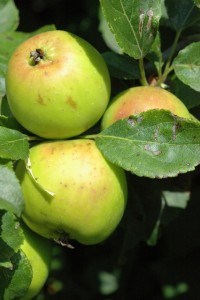Valentine’s Day is upon us and thoughts turn to love and in a month (on 16 March) tickets for the Fairy Fair go on sale… so spring is springing.
Actually May Day is the real fairy love time: the whole of May, kicking-off with May Day and Beltane, was traditionally full of fertility-related activities out-of-doors, known to the Tudors as ‘a-Maying’ and much frowned on by the Puritans but that’s another story … Anyway, here’s some flowery thoughts that might fit St Valentines Day.
Sweet violet has always been associated with love – our friends at Plantife say: ‘The sweet violet has a long and rather romantic history in European and Asian folklore: the ancient Greeks first used it to make perfume and the Romans to make wine. Ancient Britons used it for cosmetics. Medieval French troubadours used it to represent constancy in their tales of chivalrous love’. Not bad at all.
Here are three suggestions for romance with flowers
1. Sweet Violet
Try taking your romantic partner to sniff sweet violet. You can plant it in your garden – not dog (common) violet as it doesn’t smell – it can be ordered as ‘plug plants’ from http://www.wildflowers.co.uk/. You’ll have to get down on hands and knees as it’s tiny. And even more romantic, after sniffing it once you can’t catch the scent again ! That’s because it contains Ionine which deadens your sense of smell, for a bit. But it doesn’t flower until March – look out for it in natural woodland. Or maybe look for some sweet violet perfume in the shops ?
2. Wild Apple
The apple, including the wild British crab apple has long been associated with love and bountifulness. It too grows well in the garden and can be found in many hedgerows. It also feeds birds in the hard winter months – hardest of all by the way is right now, the “hungry gap” in February and March when nature’s larder starts to run out. The most important time to feed the birds. Crab apple has beautiful blossom, pinky white.
Cornish girls used to sleep with one under their pillow so they’d get a good husband. Didn’t hang on to one from last autumn ? Too bad. We’re not sure an out of season supermarket apple will work, though some crab apple jelly might. And it doesn’t flower until May. But see below …
3. Wild Rose
Dog Rose makes rose-hips which are a great source of vitamin C, and itching powder … not very romantic but people think roses are a symbol of love. Found in many hedgerows and on commons and has fabulous pink petals that can be collected to make tea and jelly. Not to be confused with eglantine which looks similar but has no big thorns and the leaves smell of apple. Featured a bit more romantically in Midsummer nights Dream (a real fairy love time):
Oberon, A Midsummer Night’s Dream, Act 2, Scene 1
I know a bank where the wild thyme blows,
Where oxlips and the nodding violet grows,
Quite over-canopied with luscious woodbine,
With sweet musk-roses and with eglantine:
There sleeps Titania sometime of the night,
Lull’d in these flowers with dances and delight
Eglantine (Sweet Briar) has dark pink petals and both species are great for bees and other insects. Eglantine is probably a better bet for gardens and grows from seed. Doesn’t flower until the summer. If you see a common problem here, you are right: St Valentines day has nothing much to do with Nature !
However if you are making your own St Valentine’s card, or maybe chosing one, you might use a or paint a picture with one of these ? And, if you pick a few petals this spring, keep them and press them between the pages of a suitably romantic book, and then make your card with them next year … The original association of St Valentine’s Day with romance seems to have come from the medieval tradition of courtly love which in 18th-century England turned into an occasion for lovers to expressed their love for each other by presenting flowers (more likely primroses – see previous blog) or giving sweets. You could try that one ! They then started sending greeting cards with pressed flowers, known as ‘Valentines’.
Sorry we can’t be more helpful but here’s a cheap alternative. Apparently in many cultures to accept a sprig of basil means that you are engaged, or destined, to be married. It may even be official in Romania, while in Italy, girls wore it in their hair to signal availability. At least basil is easy to come by as a last minute gift. And you can always cook with it if that doesn’t work.
Oh and if you already have a partner and need something romantic to talk about over your St Valentine’s Day evening dinner … why not plan a spring trip to a wood of our native small-leaved lime ? This has to be one of the most fabulous of all British trees, and as woodland historian Oliver Rackham says, is a tree of romance and delight’ (Trees and Woodlands in the British Landscape). It has a heart-shaped leaf.
Lime was once common in the ancient wildwood but is now scarce, however there are some fabulous limewoods to visit in Lincolnshire as well as Hockering Wood in Norfolk and Bradfield Woods in Suffolk and in Bedforshire, King’s Wood and Rammamere Heath. And out west there is huge coppiced one over 2,000 years old at Westonbirt Arboretum in Silk Wood.
Or for lots of beautiful spots try this Guide from the Wildlife Trusts.
Finally, you might just find an early Hawthorn leaf – some is already in leaf in our garden. That is the true tree of the Fairy Queen.







